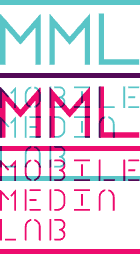Anthology: The Wireless Spectrum
The Wireless Spectrum: The Politics, Practices and Poetics of Mobile Media will published by the University of Toronto Press as part of their Digital Futures Series in fall 2010.
Editors: Barbara Crow, Michael Longford, Kim Sawchuk
The Wireless Spectrum: The Politics, Practices and Poetics of Mobile Media explores how the proliferation of wireless communication technologies modifies individual and public life, transforms our experience of space, time, and place and reshapes our day-to-day interactions. The authors included in this anthology examine the multifarious uses of a range of mobile media–cell phones, personal digital assistants, museum audio guides, and Wi-Fi or Bluetooth-enabled laptop computers– being deployed by artists, activists, citizens and consumers in innovative and unexpected ways. These reflections are timely, as we are at a key moment in the proliferation and promotion of these devices in Canada.
The collection is subdivided into four sections –"Spectral Genealogies", "Mobile Practices", "Locative Media" and "Wireless Connections"– pinpointing some of the major issues in the interlocking intellectual terrain of current studies of mobile, wireless communications. The contributors include artists, academics and renegade developers. As a whole the articles interrogate how new mobile forms of community and practices disturb the corporate and industry agendas that so often guide the purchase and distribution of these technologies.
The articles in The Wireless Spectrum are engaged in this new terrain of inter-disciplinary research occurring on mobile technologies in Canada and across the world. The majority of contributors provide a snapshot of this current conjuncture of mobile technology emergence. A unique contribution to these debates as it brings together writers from communications, cultural studies, design, and new media, The Wireless Spectrum collectively asks how wireless communications technologies present a challenge to standard conceptualizations of place, space and location whilst transfiguring subjectivities and creating new forms of sociality and provocative aesthetic practices.
For a complete Table of Contents, click the link below.
We have received support for this publication from SSHRC Aid to Scholarly Publications.
Wireless TOC




